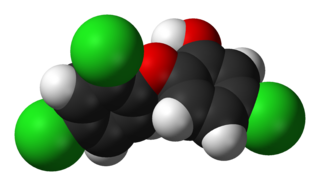 W
WSelective androgen receptor modulators or SARMs are a novel class of androgen receptor ligands. They are intended to have the same kind of effects as androgenic drugs but be much more selective in their action, allowing them more uses than those of anabolic steroids. SARMs signify a new era of tissue-selective androgens with an unknown potential to treat several diseases.
 W
WAC-262536 is a drug developed by Acadia Pharmaceuticals which acts as a selective androgen receptor modulator (SARM). Chemically it possesses endo-exo isomerism, with the endo form being the active form. It acts as a partial agonist for the androgen receptor with a Ki of 5nM, and no significant affinity for any other receptors tested. In animal studies it produced a maximal effect of around 66% of the anabolic action of testosterone, but only around 27% of its potency as an androgen.
 W
WAcetothiolutamide is a selective androgen receptor modulator (SARM) derived from the nonsteroidal antiandrogen bicalutamide that was described in 2002 and was one of the first SARMs to be discovered and developed. It is a high-affinity, selective ligand of the androgen receptor (AR), where it acts as a full agonist in vitro, and has in vitro potency comparable to that of testosterone. However, in vivo, acetothiolutamide displayed overall negligible androgenic effects, though significant anabolic effects were observed at high doses. In addition, notable antiandrogen effects were observed in castrated male rats treated with testosterone propionate. The discrepancy between the in vitro and in vivo actions of acetothiolutamide was determined to be related to rapid plasma clearance and extensive hepatic metabolism into a variety of metabolites with differing pharmacological activity, including AR partial agonism and antagonism. In accordance with its poor metabolic stability, acetothiolutamide is not orally bioavailable, and shows activity only via injected routes such as subcutaneous and intravenous.
 W
WAndarine is an investigational selective androgen receptor modulator (SARM) developed by GTX, Inc for treatment of conditions such as muscle wasting, osteoporosis and benign prostatic hypertrophy, using the nonsteroidal antiandrogen bicalutamide as a lead compound.
 W
WBMS-564,929 is an investigational selective androgen receptor modulator (SARM) which is being developed by Bristol-Myers Squibb for treatment of the symptoms of age-related decline in androgen levels in men ("andropause"). These symptoms may include depression, loss of muscle mass and strength, reduction in libido and osteoporosis. Treatment with exogenous testosterone is effective in counteracting these symptoms but is associated with a range of side effects, the most serious of which is enlargement of the prostate gland, which can lead to benign prostatic hypertrophy and even prostate cancer. This means there is a clinical need for selective androgen receptor modulators, which produce anabolic effects in some tissues such as muscle and bone, but without stimulating androgen receptors in the prostate.
 W
WEnobosarm, also known as ostarine or MK-2866, is an investigational selective androgen receptor modulator (SARM) developed by GTx, Inc. for the treatment of conditions such as muscle wasting and osteoporosis, formerly under development by Merck & Company.
 W
WGSK2881078 is a drug which acts as a selective androgen receptor modulator (SARM). It was developed for the prevention of muscle wasting and sarcopenia in elderly people.
 W
WJNJ-28330835 is a drug which acts as a selective androgen receptor modulator (SARM). In studies on rats it was found to enhance muscle growth and sexual behavior but with minimal effects on prostate gland size. A number of related compounds are known, though JNJ-28330835 has progressed furthest through development.
 W
WLG121071 is a selective androgen receptor modulator (SARM) developed by Ligand Pharmaceuticals that was first described in 1999 and was the first orally active nonsteroidal androgen to be discovered. It is a tricyclic quinolone derivative, structurally distinct from other nonsteroidal AR agonists like andarine and enobosarm (ostarine). The drug acts as a high-affinity full agonist of the androgen receptor (AR), with a potency and efficacy that is said to be equivalent to that of dihydrotestosterone (DHT). Unlike testosterone, but similarly to DHT, LG121071 and other nonsteroidal androgens cannot be potentiated by 5α-reductase in androgenic tissues, and for this reason, show tissue-selective androgenic effects. In accordance, they are said to possess full anabolic activity with reduced androgenic activity, similarly to anabolic-androgenic steroids.
 W
WLGD-2226 is an investigational selective androgen receptor modulator (SARM), which is being developed for treatment of muscle wasting and osteoporosis.
 W
WLGD-3303 is a drug which acts as a selective androgen receptor modulator (SARM), with good oral bioavailability. It is a selective agonist for the androgen receptor, producing functional selectivity with effective dissociation of anabolic and androgenic effects, acting as a partial agonist for androgenic effects, but a full agonist for anabolic effects. It has been investigated as a possible treatment for osteoporosis, and was shown in animal studies to enhance the effectiveness of a bisphosphonate drug.
 W
WLigandrol is a novel nonsteroidal oral selective androgen receptor modulator (SARM) for treatment of conditions such as muscle wasting and osteoporosis, discovered by Ligand Pharmaceuticals and currently under development by Viking Therapeutics.
 W
WLY-2452473 (TT-701) is a drug which acts as a selective androgen receptor modulator (SARM). It has been investigated for the treatment of erectile dysfunction and symptoms associated with benign prostate hyperplasia.
 W
WMK-0773, also known as PF-05314882, is a steroidal, orally active selective androgen receptor modulator (SARM) that was under development by Merck and GTx for the treatment of sarcopenia in women and men. Clinical trials for sarcopenia began in late 2007 but the collaboration between Merck and GTx ended in early 2010 and GTx terminated development of MK-0773 shortly thereafter.
 W
WRAD140 is an investigational selective androgen receptor modulator (SARM) that is developed by Radius Health, Inc. for use in androgen replacement therapy. It was licensed to Ellipses Pharmaceuticals in 2020. Some of the potential benefits under investigation are for the treatment of conditions such as muscle wasting and bone loss.
 W
WRU-59063 is a nonsteroidal androgen or selective androgen receptor modulator (SARM) which was first described in 1994 and was never marketed. It was originally thought to be a potent antiandrogen, but subsequent research found that it actually possesses dose-dependent androgenic activity, albeit with lower efficacy than dihydrotestosterone (DHT). The drug is an N-substituted arylthiohydantoin and was derived from the first-generation nonsteroidal antiandrogen (NSAA) nilutamide. The second-generation NSAAs enzalutamide, RD-162, and apalutamide were derived from RU-59063.
 W
WS-23 is an investigational selective androgen receptor modulator (SARM) developed by GTX, Inc as a potential male hormonal contraceptive. It binds to the androgen receptor more strongly than older drugs such as andarine with a Ki of 1.7 nM, and in animal studies it showed both a good ratio of anabolic to androgenic effects, and dose-dependent suppression of spermatogenesis with spontaneous recovery after cessation of treatment.
 W
WS-40503 is an investigational selective androgen receptor modulator (SARM) developed by the Japanese company Kaken Pharmaceuticals, which was developed for the treatment of osteoporosis. SARMs are a new class of drugs which produce tissue-specific anabolic effects in some tissues such as muscle and bone, but without stimulating androgen receptors in other tissues such as in the prostate gland, thus avoiding side effects such as benign prostatic hypertrophy which can occur following treatment with unselective androgens like testosterone or anabolic steroids.
 W
WTFM-4AS-1 is a dual selective androgen receptor modulator (SARM) and 5α-reductase inhibitor. It is a potent and selective partial agonist (Emax = 55%) of the androgen receptor (IC50 = 30 nM) and inhibitor of 5α-reductase types I and II (IC50 = 2 and 3 nM, respectively). TFM-4AS-1 shows tissue-selective androgenic effects; it promotes the accumulation of bone and muscle mass and has reduced effects in reproductive tissues and sebaceous glands. In addition, it does not promote growth of the prostate gland and it antagonizes the actions of dihydrotestosterone (DHT) in the seminal vesicles. Structurally, TFM-4AS-1 is a 4-azasteroid.
 W
WTriclosan is an antibacterial and antifungal agent present in some consumer products, including toothpaste, soaps, detergents, toys, and surgical cleaning treatments. It is similar in its uses and mechanism of action to triclocarban. Its efficacy as an antimicrobial agent, the risk of antimicrobial resistance, and its possible role in disrupted hormonal development remains controversial. Additional research seeks to understand its potential effects on organisms and environmental health.
 W
WYK-11 is a synthetic steroidal selective androgen receptor modulator (SARM). It is a gene-selective partial agonist of the androgen receptor (AR) and does not induce the physical interaction between the NTD/AF1 and LBD/AF2, which is required for full transactivation of the AR. The drug has anabolic activity in vitro in C2C12 myoblasts and shows greater potency than dihydrotestosterone (DHT) in this regard. It has been investigated as a potential treatment for sepsis-induced muscle wasting in animal studies.